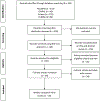Parentification Among Young Carers: A Concept Analysis
- PMID: 38828384
- PMCID: PMC11142575
- DOI: 10.1007/s10560-021-00784-7
Parentification Among Young Carers: A Concept Analysis
Abstract
There are approximately 1.4 million young carers in the United States alone. Being a young carer can result in parentification, a type of role reversal that occurs when children take on the roles and responsibilities of the adult. The purpose of this concept analysis is to provide a better understanding of the phenomenon of parentification among young carers through a description of its antecedents, attributes, and consequences using the steps of Rodgers' evolutionary method. The databases CINAHL, PubMed, PsycINFO, and Scopus were searched to identify 25 articles. The antecedents of the concept include the dependency of the care receiver and the child's adoption of a caregiving role. The attributes include fairness, obligation, resiliency, individuation, confidence in performing care tasks, cultural normalcy, family system functioning, support system, family resources, caregiver-care receiver relationship, and awareness of the child's needs. Parentification has both positive and negative consequences that impact the young carer. The antecedents, consequences, and identifiable attributes of the concept are presented through this work to provide a comprehensive picture of parentification among young carers. These findings showcase the multidimensional nature of parentification and the broad impact that it can have on young carers. While these findings do provide greater insight into young carers, the fact remains that little is known about this underserved and underacknowledged population. This concept analysis provides a foundation of understanding that specifies potential targets for intervention development, as well as modifiable outcomes, that can be explored through future research and intervention work.
Keywords: Caregiving children; Concept analysis; Parentification; Young carers.
Conflict of interest statement
Conflict of interest The authors declare that they have no conflict of interest.
Figures
Similar articles
-
Understanding and addressing factors affecting carers' mental health during end-of-life caregiving: synopsis of meta synthesis of literature and stakeholder collaboration.Health Soc Care Deliv Res. 2025 Feb;13(8):1-27. doi: 10.3310/RTHW8493. Health Soc Care Deliv Res. 2025. PMID: 39981757
-
A cross-sectional study on experiences of young adult carers compared to young adult noncarers: parentification, coping and resilience.Scand J Caring Sci. 2018 Dec;32(4):1409-1417. doi: 10.1111/scs.12586. Epub 2018 May 15. Scand J Caring Sci. 2018. PMID: 29766533
-
What factors are associated with informal carers' psychological morbidity during end-of-life home care? A systematic review and thematic synthesis of observational quantitative studies.Health Soc Care Deliv Res. 2023 Nov;13(8):1-70. doi: 10.3310/HTJY8442. Health Soc Care Deliv Res. 2023. PMID: 37991230
-
Exploring Resiliency and Parentification in Polish Adolescents.Int J Environ Res Public Health. 2021 Oct 30;18(21):11454. doi: 10.3390/ijerph182111454. Int J Environ Res Public Health. 2021. PMID: 34769971 Free PMC article.
-
Cultural competence in healthcare in the community: A concept analysis.Health Soc Care Community. 2018 Jul;26(4):590-603. doi: 10.1111/hsc.12556. Epub 2018 Mar 7. Health Soc Care Community. 2018. PMID: 29516554
Cited by
-
Profiles of French young carers taking part in an arts and respite care program.Health Soc Care Community. 2022 Sep;30(5):e3253-e3264. doi: 10.1111/hsc.13769. Epub 2022 Feb 24. Health Soc Care Community. 2022. PMID: 35199897 Free PMC article.
-
Inequities Among Cancer Caregivers with Diverse Identities: A Review of the Literature and Future Directions.Curr Oncol Rep. 2023 Jul;25(7):803-812. doi: 10.1007/s11912-023-01415-3. Epub 2023 Apr 12. Curr Oncol Rep. 2023. PMID: 37043117 Free PMC article. Review.
-
Young Carers in Early Childhood-How Are Young Carers Represented in Broader Literature and What Factors Influence Dominant Representations of Young Carers in Early Childhood in the UK?Healthcare (Basel). 2025 Jan 30;13(3):280. doi: 10.3390/healthcare13030280. Healthcare (Basel). 2025. PMID: 39942469 Free PMC article. Review.
-
Gender and care: Does gender modify the mental health impact of adolescent care?SSM Popul Health. 2023 Jul 31;23:101479. doi: 10.1016/j.ssmph.2023.101479. eCollection 2023 Sep. SSM Popul Health. 2023. PMID: 37583619 Free PMC article.
-
Parentification Vulnerability, Reactivity, Resilience, and Thriving: A Mixed Methods Systematic Literature Review.Int J Environ Res Public Health. 2023 Jun 21;20(13):6197. doi: 10.3390/ijerph20136197. Int J Environ Res Public Health. 2023. PMID: 37444045 Free PMC article.
References
-
- AARP & National Alliance for Caregiving. (2020). Caregiving in the United States 2020. AARP. 10.26419/ppi.00103.001 - DOI
-
- Bauman LJ, Foster G, Johnson Silver E, Berman R, Gamble I, & Muchaneta L (2006). Children caring for their ill parents with HIV/AIDS. Vulnerable Children and Youth Studies, 1(1), 56–70. 10.1080/17450120600659077 - DOI
Grants and funding
LinkOut - more resources
Full Text Sources


